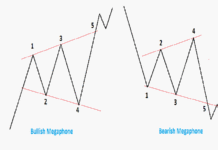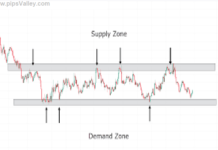
Analyzing the AUD/NZD (Australian Dollar/New Zealand Dollar) currency pair involves considering a variety of factors that can influence its exchange rate. Here are some key factors to consider when conducting an analysis:
Interest Rates: Central bank interest rate decisions are a major driver of currency movements. Higher interest rates in a country can attract foreign investors looking for better returns, leading to currency appreciation. Conversely, lower interest rates can lead to currency depreciation.
Economic Indicators: Key economic indicators, such as GDP growth, employment data, inflation rates, and trade balances, provide insights into the overall health of a country’s economy. Strong economic performance often supports currency appreciation.
Political Stability: Political stability and effective governance can boost investor confidence and attract foreign investment. Uncertainty and political turmoil can have the opposite effect.
Trade Relationships: The AUD and NZD are both commodity currencies, heavily influenced by their trade relationships. Exports of commodities like minerals, agricultural products, and dairy play a significant role in these economies.
Commodity Prices: As commodity currencies, the AUD and NZD are sensitive to changes in commodity prices. For example, rising prices for Australia’s iron ore or New Zealand’s dairy products can positively impact their currencies.
Market Sentiment: Market sentiment, often driven by geopolitical events and global economic conditions, can impact currency movements. Risk-on sentiment might benefit the AUD due to its higher yield, while risk-off sentiment might favor the NZD as a safe-haven.
Technical Analysis: Traders often use technical analysis to study price charts and identify patterns, trends, and key support/resistance levels. These analyses can provide insights into potential price movements.
Monetary Policy: The decisions and statements of the Reserve Bank of Australia (RBA) and the Reserve Bank of New Zealand (RBNZ) regarding monetary policy, quantitative easing, and forward guidance can influence the currency pair’s direction.
Global Economic Conditions: Global economic factors, such as changes in the US Dollar (USD) strength, global economic growth prospects, and international trade dynamics, can impact both the AUD and NZD.
Correlation with Other Currencies: Consider the relationship between the AUD/NZD and other currency pairs. For example, if the AUD/USD is moving in a certain direction due to US economic data, it might also influence the AUD/NZD.
Market Speculation: Traders’ perceptions and speculative activities can lead to short-term fluctuations in the currency pair’s value.
Remember that currency markets are complex and influenced by a multitude of factors, often in combination. Therefore, a comprehensive analysis would involve assessing the interplay of these factors to form a more accurate understanding of the potential future movements of the AUD/NZD currency pair. It’s also important to stay updated with current news and developments that could impact these factors. Today’s trading overview as follows:
- We’re looking at AUD/NZD on the 4 hour chart today.
- With price moving within a range between the 1.07400 and 1.09230 zones,
- It’s possible we may see a pullback and rejection between 1.08000 and 1.08200.
- This has previously acted as support and resistance, so intraday traders may look to set alerts at the level or end-of-day traders for a rejection candle.
Recommendations: Buy/Buy limit @ 1.08100 Take Profit: 1.09100
Read more : Xauusd Analysis Today on dated 28-8-2023



























